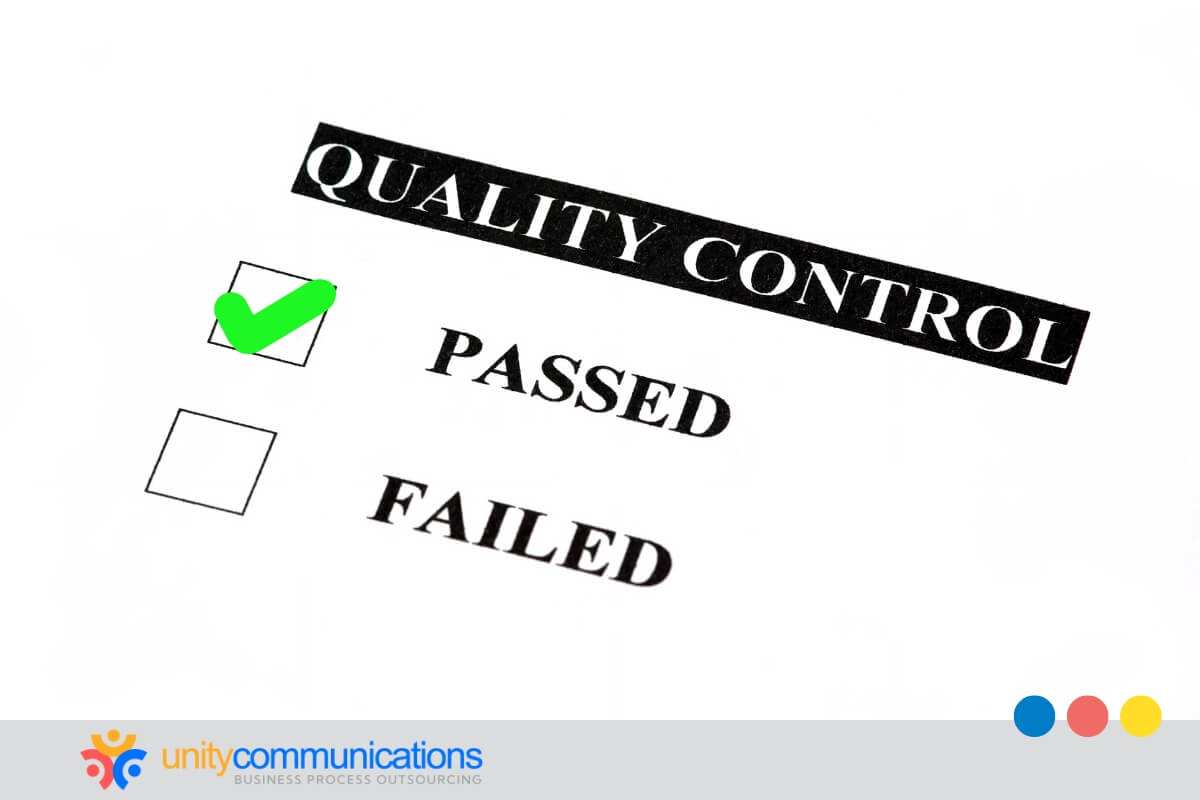Table of Contents
To expand your reach to worldwide markets, you must publish content that appeals to different audiences while retaining a unified brand message. Business process outsourcing (BPO) provides an effective solution for managing the challenges of global content initiatives.
Content outsourcing enables your company to quickly leverage regional expertise. In this article, you’ll learn about the primary benefits and tactics for outsourcing content to help you improve your international presence and engage global audiences. Continue reading!
Understanding content outsourcing for global audiences

What is BPO, and how can you use it to appeal to global audiences? BPO is the practice of contracting a third-party firm to manage specific non-core functions. In content marketing, you can delegate the development, management, and optimization of engaging content to a specialized provider.
When producing global content, this strategy becomes particularly beneficial. Outsourcing enables you to access a diverse, international talent pool to consistently deliver high–quality content, helping you build and enhance competitiveness.
Examine the benefits of outsourcing content:
- Local expertise: An outsourcing partner familiar with regional nuances enhances the relatability and effectiveness of content. This localized approach helps in catering to the target audience more precisely.
- Cost efficiency: Outsourcing content creation is cost–effective compared to maintaining in-house teams. By reducing hiring and training expenses, you can allocate time and resources to other critical areas. Research indicates that outsourcing maximizes labor cost savings by up to 70%.
- Scalability: Outsourcing lets you smoothly scale your content marketing strategy. Whether it’s a new blog post, video, or comprehensive campaign, the BPO team can tackle workloads without straining internal marketing teams.
- Faster market entry: With external content providers, you can expedite entry into new markets. They excel in keyword research so that content matches local search trends, boosting visibility.
Key considerations for selecting outsourcing partners
A capable BPO partner can help ensure effective content outsourcing for global audiences. Below are the primary factors to help your business find the right service provider:
- Experience in target markets: The nearshore or offshore outsourcing company should have in-depth knowledge of your target markets and can offer insights that a new entrant might overlook. Its understanding of local preferences can enhance the content’s impact and boost engagement.
- Cultural knowledge: The third-party provider that understands the cultural subtleties of your target audience can tailor content that resonates. This is necessary for digital marketing, where culturally relevant publications can drive meaningful connections.
- Reliability and communication: Solid interactions and transparency are the main ingredients for efficient collaboration. Evaluate potential BPO partners for their ability to deliver regular updates and clear communication channels.
- Vetting processes and portfolios: Review their work samples to assess the quality and diversity of their work. An experienced and creative content creator should adapt to different styles and tones to meet the unique needs of your various audiences.
- Contract terms and flexibility: Transparent contract conditions regarding deliverables, deadlines, and scope, outlined in a comprehensive business process outsourcing agreement, are vital. Flexible terms can accommodate changes, making it easier to adjust your content calendar as needed.
Ensuring cultural relevance in outsourced content
Content outsourcing for global audiences demands a nuanced approach to cultural sensitivity. It must resonate deeply with diverse markets to build authentic and sustained brand relationships with your audience.
Consider these critical aspects:
- Cultural research: The BPO team should explore your target audience’s cultures and traditions. This in-depth insight enables them to craft messages consistent with local values. According to CSA Research, 40% of consumers will not buy in other languages, highlighting the importance of culturally relevant content.
- Stereotyping: Third-party specialists should refrain from oversimplified or stereotyped depictions in your content. They should understand how to create content that acknowledges cultural diversity while avoiding frequent mistakes that might harm a brand’s reputation.
- Nuanced messaging: Modify the wording, tone, and context to suit your audience’s cultural framework. Third-party teams who understand regional variations can tailor your messaging to fit seamlessly into the cultural context, making your brand more relatable.
- Culturally appropriate images: Visual material demonstrates your brand’s understanding and regard for its audience and consumers. The BPO personnel should be adept at selecting culturally suitable graphics to help avoid mistakes, develop brand acceptability, and form long–term connections with various customers across regions.
Addressing language and localization needs
Content outsourcing for global audiences involves linguistic accuracy in adapting content to fit diverse markets. Beyond translation, BPO teams localize content to maintain meaning while improving appeal.
The Content Marketing Institute reports that 34% of marketers use various translation methods, while 37% of business-to-business (B2B) firms rely on enterprise translation services combining outsourced human expertise and technology solutions. This underscores the need for a BPO partner with excellent localization capabilities to effectively serve global markets.
Significant elements to focus on include:
- Translation vs. localization: Translation changes content into another language, while localization adapts it to fit the region’s culture and preferences. This includes adjusting a marketing slogan to align with a target market’s humor or values.
- Native speakers: Native speakers understand idiomatic expressions and regional nuances that ensure your message sounds natural and culturally appropriate. They bridge the gap between language and culture, providing a vital layer of authenticity.
- Tone and context: Preserving tone and context with local teams and native expertise helps retain emotional appeal across formal, casual, respectful, or humorous languages.
- Tools for language adaptation: Artificial intelligence (AI)-powered platforms and other modern translation tools can speed up adaptation. However, human intervention should complement them to avoid losing idiomatic accuracy and cultural relevance.
Maintaining brand consistency across diverse markets

A Marq report notes that consistent branding drives up to 20% more growth and 33% higher revenue. Content outsourcing for global audiences helps strike this balance by adapting content to local markets while upholding core brand guidelines.
Essential points to assess include:
- Brand guidelines: Establish a clear set of brand rules with your BPO vendor. These include visual elements, voice, tone, and messaging style that remain consistent across all markets and cultures.
- Centralized content strategy: Develop a coordinated content strategy that ensures all markets follow the same approach and maintain alignment while allowing local adaptation when necessary.
- Consistent messaging across markets: Although content needs to resonate with local preferences and values, the core message should stay the same. Localized content must align with the brand’s narrative to avoid confusion.
- Regular audits and feedback loops: Conduct regular content audits and establish feedback loops to quickly identify and correct inconsistencies. This process helps maintain brand cohesion across various markets.
- Training for local teams: Provide comprehensive training on brand values and guidelines for local teams. This equips them to deliver content that aligns with the global brand voice while catering to regional preferences.
Setting clear content goals and expectations for global reach
Defining clear content goals helps guide your messaging efforts during international expansion. When outsourcing content creation, implement these points with your partner BPO organization to establish objectives:
- Setting goals: Clearly define specific, measurable objectives for each market, such as enhancing brand visibility, improving engagement, or boosting conversions.
- Aligning expectations: Transparent communication ensures that in-house and third-party teams understand goals, timelines, and quality standards.
- Briefing documents for third-party specialists: Provide comprehensive, easy-to-follow briefing documents outlining brand guidelines, content tone, and local market insights. This step aligns teams toward shared goals and keeps the content tone and style consistent.
- Exercising cultural sensitivity: Respect cultural differences and regional preferences in content. Tailor messaging to avoid confusion and cater to local audiences.
- Scaling content: Develop a flexible content strategy that maintains brand consistency while adapting to each market’s needs.
- Collaborating between teams: Foster collaboration between internal and BPO teams for smooth communication, goal alignment, and shared content across regions.
- Repurposing content: Repurpose content across various formats or languages to extend the reach and maintain consistency without sacrificing quality. HubSpot’s survey finds that 82% of social media marketers repurpose content for different platforms. This strategy simplifies engagement while maintaining brand consistency across channels.
Tools for managing global content outsourcing projects
Digital tools streamline collaboration, improve efficiency, and maintain quality in outsourced operations. They help your organization manage multiple markets while keeping a consistent brand message. Vital for content outsourcing for global audiences, they simplify team coordination, track performance, and refine strategies across regions.
You can utilize the following tools:
- Project management tools: Trello and Asana help teams coordinate tasks, track progress, and confirm timely delivery across different time zones.
- Content collaboration platforms: Google Drive, Dropbox, and similar applications facilitate real-time collaboration between internal and BPO teams, maintaining smooth content production.
- Translation management systems: The software helps manage multilingual content, so translations are accurate and aligned with brand guidelines. Smartling and Lokalise are among the examples.
- Analytics tools: Applications such as Google Analytics and Semrush help monitor the effectiveness of content across markets, providing insights to refine strategies.
- Workflow automation platforms: These digital tools automate repetitive tasks for quick team coordination. Zapier and Make serve as examples.
- Content version control systems: Platforms such as GitHub track content revisions, allowing all team members to access the latest updates and avoiding discrepancies in final outputs.
- Digital asset management systems: Bynder and Widen are popular tools for organizing, storing, and exchanging content more efficiently.
Monitoring and measuring outsourced content performance
Monitoring outsourced content’s performance helps determine strategies’ effectiveness in global markets. Continuous evaluation confirms whether content resonates with local audiences and aligns with global business objectives.
Here are crucial metrics to track:
- Engagement tracking: Examine social media interactions, comments, shares, reactions, and likes to determine market content engagement.
- Key performance indicators (KPIs): Click-through rates (CTR), bounce rates, engagement metrics, social shares, and conversions can assess how successfully content contributes to company objectives.
- Feedback loops: Obtain information from local teams or customers to find content improvement or adaptation opportunities in various regions.
- Return on investment (ROI) analysis: Determine the ROI by comparing content performance to the outsourcing cost. This helps calculate the cost-effectiveness of content outsourcing for global audiences.
- Content quality evaluation: Review how well the outsourced content adheres to brand rules and its overall quality as opposed to internal content.
- Search engine optimization (SEO) performance: Monitor keyword ranking, organic search traffic, and backlink quality to assess the content’s impact on SEO.
- Audience retention rate: Estimate how long people stay engaged with the material to analyze its relevance and influence on various markets.
- Localization efficacy: Investigate how well the posts adjust to local nuances and language preferences so that they resonate well across varied areas.
Avoiding common challenges in global content outsourcing

Content outsourcing for global audiences presents several challenges, and your organization must address them to sustain efficiency and content quality. Identifying and minimizing these risks can mitigate disruptions and help maintain a consistent brand voice across different markets.
- Communication barriers: Misunderstandings and unclear instructions can lead to delays and oversights. Use collaboration tools (e.g., Slack or Zoom) to maintain regular quick interactions or check-ins.
- Time zone differences: International time variations can complicate project deadlines and response periods. To stay on track, leverage project management tools (e.g., Trello or Asana) for task tracking across regions and set clear milestones and timelines.
- Quality control: Maintaining consistent quality with a third-party team working on diverse projects is challenging. Implement clear content guidelines and a robust review process involving local experts for quality assurance. Grammarly, Hemingway Editor, and similar tools can also assist in maintaining standards.
- Cultural expectation alignment: Cultural differences in communication and preferences can affect content effectiveness. Conduct regional research and involve local teams to verify the content resonates well with target audiences in different markets.
- Data privacy management: Different regions have varying data privacy laws, so compliance with local regulations is vital. Deploy secure systems and work with legal experts to safeguard sensitive data during outsourcing.
Strategies for scaling global content operations effectively
Scaling global content operations necessitates strategic planning and an adequate infrastructure for consistency and relevance across multiple audiences. Your company can streamline operations and expand effectively by implementing scalable processes, employing technology, and offering sufficient training.
Consider the following strategies to scale your content operations:
- Streamline your processes. Standardize workflows to streamline tasks. Use project management tools to delegate and track tasks.
- Utilize technology. Invest in content management systems (CMS) and translation tools to consolidate content, track progress, and automate routine operations. These technologies increase efficiency and consistency across marketplaces.
- Localize, not just translate. Instead of simply rewriting text, customize it to reflect local cultural preferences. This allows firms to connect with their audiences while maintaining a consistent global message.
- Train BPO teams. Provide third-party professionals comprehensive training on brand guidelines, tone, and target audience. This process helps the external team follow your content objectives across locations.
- Gauge performance. Monitor and assess content’s effectiveness with metrics such as engagement rates, ROI, and SEO impact. This helps to discover practical techniques and opportunities for improvement.
The bottom line
To engage various global markets, develop content that resonates with local audiences and retains a consistent brand voice. Content outsourcing for global audiences offers the expertise and resources to achieve these efforts.
Are you ready to optimize your content strategy across regions? Let’s connect and discuss how we can improve your global content operations.




